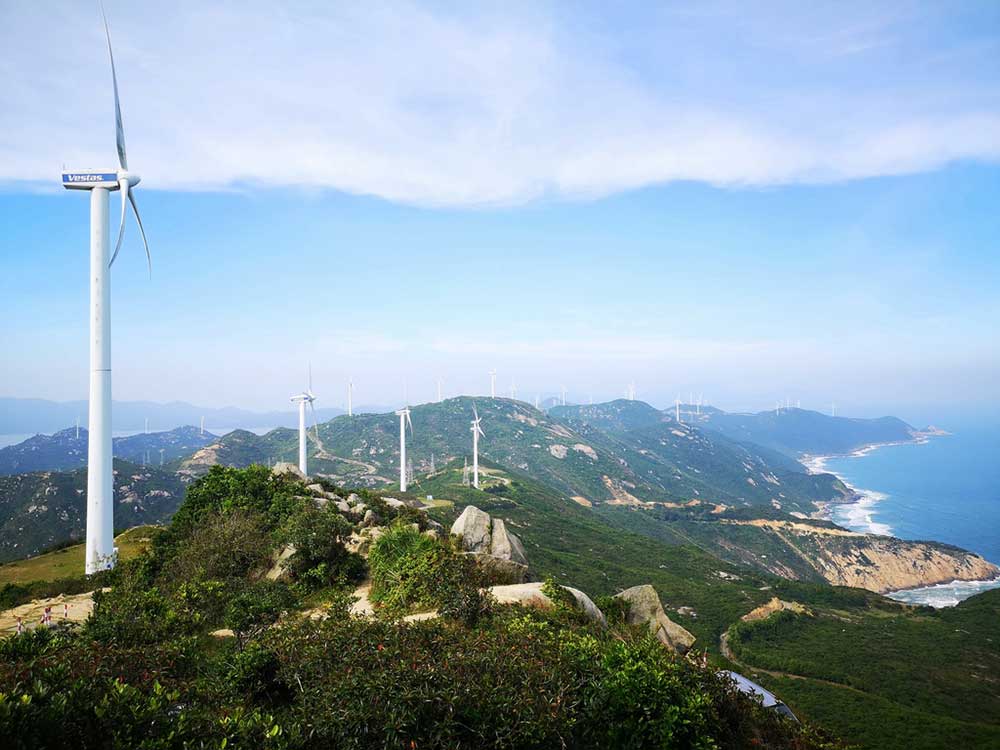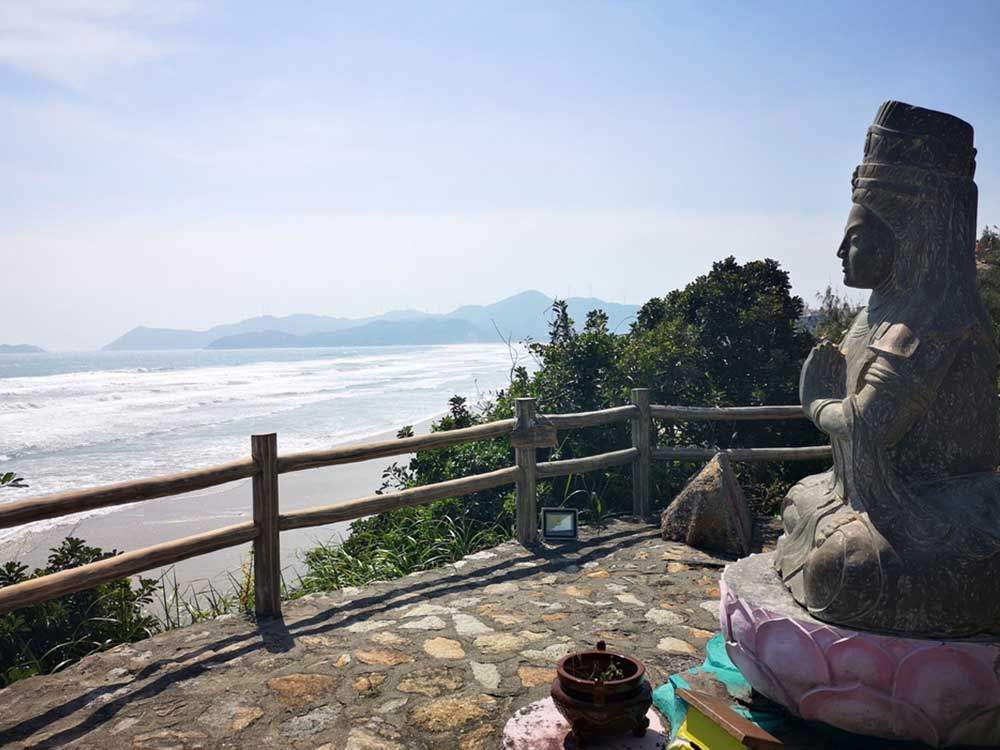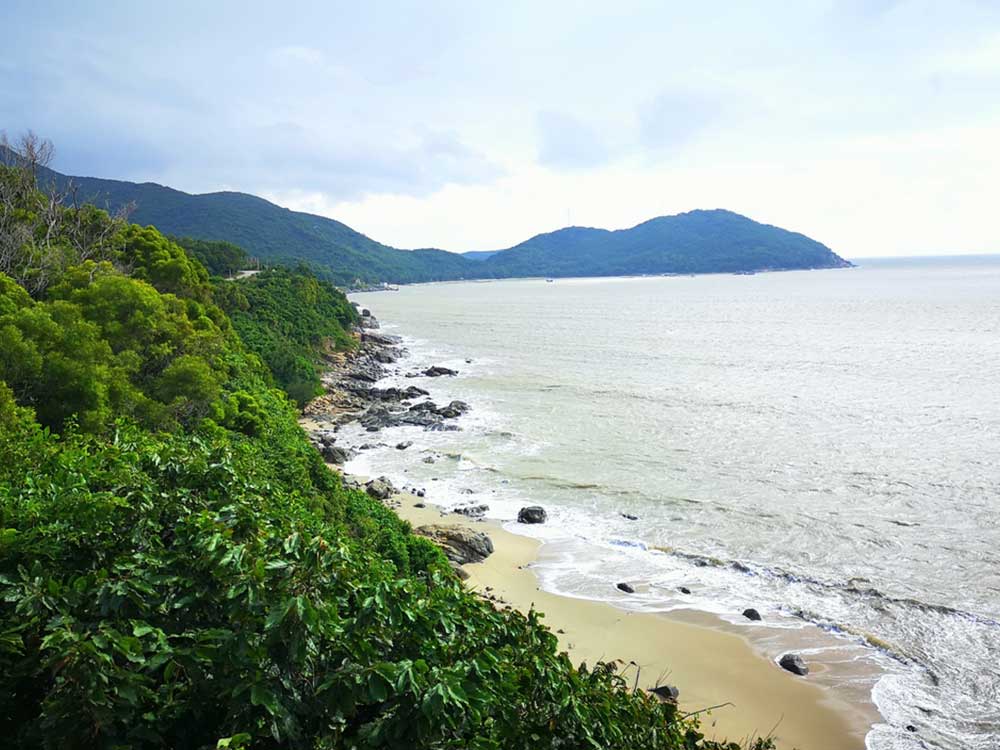Xiachuan & Shangchuan Islands
Some pictures of Xiachuan and Shangchuan islands
Introduction to Xiachuan and Shangchuan Islands
Chuanshan Archipelago, the pearls of the South China Sea
The Chuanshan Archipelago (川山群岛) is a group of islands in the South China Sea, located off the coast of Guangdong Province in southern China. The two largest islands are Shangchuan (上川) and Xiachuan (下川), and are part of Taishan County.
Shangchuan Island (Chinese: 上川岛)
Shangchuan Island was one of the important stops on the Maritime Silk Road. The first Catholic missionary to China, St. Francis Xavier, died here while waiting for a ship to take him to the mainland in 1552. As a result, the island has many monuments and statues dedicated to him.
The island extends in length, on a North-South axis of 23km. It is mainly mountainous and densely wooded, and has a central plain dotted with rice fields. The 217km coastline is rugged, with several bays, coves, small fishing ports and some beautiful beaches of fine sand and clear water. The most beautiful beach is on the East coast at Faishan Bay, 6km long. It is here, at the “flying sand” beach and in its tourist resort, that all the hotels, restaurants and seaside activities are concentrated. On site you can rent scooters, electric bikes, or a vehicle with driver to travel around the island… Note however that outside the high season and Chinese holidays some activities may not be available and the place may seem a little sleepy (on the other hand you will gain in tranquility).
Apart from the classic seaside activities, you can explore the wilder and mountainous north of the island on foot, with tropical forests occupied by groups of macaques. In the southern part of the island, a winding road climbs to the top of a particularly photogenic wind farm. On the way, you can stop at the fishing port of Shadi, famous for its sunsets. Shangchuan Island also has a golf course.
Xiachuan Island (Chinese: 下川)
Xiachuan Island is smaller than its sister island, but more developed in terms of tourism, particularly in its southern part around the Wangfuzhou tourist area.
The island features a pristine coastal landscape, ideal for strolling on the beach, watching sunrises and sunsets over the sea.
Nan’ao Bay is where most of the beach activities are concentrated, with miles of coconut trees lining the beach. Hotels line the Wangfuzhou promenade, each with a large terrace restaurant where a wide selection of tasty local seafood and fish is served in aquariums. You can also enjoy a quieter atmosphere in restaurants further from the beach, or by heading to a small fishing village like Da’ao in the southwest.
From Wangfuzhou you can rent all kinds of vehicles, scooters, electric quads, jeeps, bicycles… and explore the island at your own pace. The coastal road, devoid of traffic, will take you through small traditional villages nestled between the sea and the fold of the hills. The rural exodus and unproductive fishing have led to the desertification of some villages. Many houses made of faded white mud are huddled together and left abandoned. Narrow alleys crisscross these dying hamlets, like the meshes of a fishing net closing on a bygone era.
It is possible to go out on a fishing boat to observe or fish yourself with a line. If you want to fish, the sailor with his boat will drop you off on an isolated islet at sea and will come back to pick you up a few hours later. If you opt for an accompaniment, you have the choice between a small fishing boat (maximum 6 people) or a larger boat (up to 20 people). Different fishing techniques are practiced: line, net, lantern, squid, crab… It is an excellent opportunity to discover the life of Chinese sailors. The fishing demonstration lasts about 2 hours and can be organized at any time (on small boats). You can also keep part of the catch and have it prepared in a local restaurant (option offered in our tour).
In Wangfuzhou many seaside activities are offered: diving, paragliding, inflatable boats, …
Weather and tourist season on Xiachuan and Shangchuan Islands
The islands enjoy a subtropical oceanic climate, with a maritime monsoon climate characterized by hot and humid weather. Temperatures during the year vary between 15 degrees in winter on average and 30 degrees in summer. From April to September it is the rainy season which collects 80% of the precipitation of the whole year. Typhoons frequently affect this area from July to September and can block maritime connections, knowing that the phenomenon rarely persists more than 48 hours. Swimming in the sea is possible from May to the end of October with clearer waters in spring before the typhoons pass.
Tourist numbers are high in July and August, and during the Chinese holidays. Outside of the high season, visitors are few in number, with only small increases during sunny weekends, but this remains very reasonable. In the off-season, the seaside resorts are almost at a standstill (unlike Hainan Island which attracts many tourists in winter). Accommodation prices vary considerably depending on the season.
Very few Westerners visit these islands, where few inhabitants speak English.






